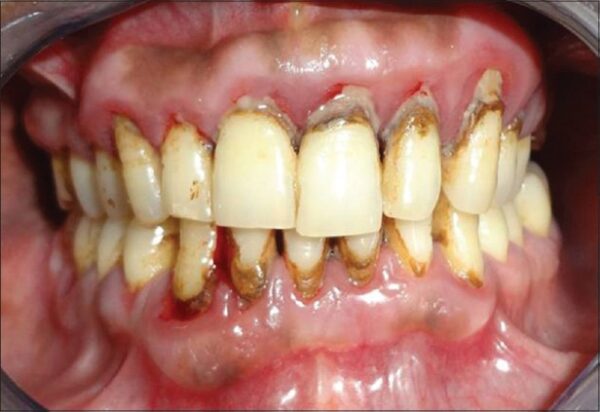Gum disease is an infection of the mouth tissues which affects what holds your teeth together, and Periodontitis is an advanced form of the disease. It starts with bacterial development in your mouth and could lead to tooth loss if it is not properly treated because it damages the tissue that surrounds your teeth.
Gum and jawbone damage are both possible effects of gum infections. Although frequent, periodontitis is generally preventable. Usually, inadequate dental hygiene is the cause. Loss of teeth can result from periodontitis. It can raise the risk of lung and heart conditions.
Symptoms include gums that are swollen, red, and tender. To safeguard the adjacent bone, professional cleaning of the pockets around the teeth is a component of the treatment. Advanced conditions can call for surgery.
Gum disease is preventable. Here are some techniques for maintaining the health of your gums.
1. Floss: At least once per day, floss your teeth. Flossing helps to remove plaque and food particles that are difficult for your toothbrush to reach and this is confirmed by Nigerian Dental Association (NDA). It makes no difference when you floss. It can be done at night, in the morning, or after lunch.
2. Regular dental cleanings are good for your teeth: Early signs of gum disease can easily be spotted if you visit your dentist regularly, and this allows for the treatment of symptoms before they worsen. Tartar removal necessitates a professional cleaning service. One of the advantages of regular dental cleanings is that they can remove any plaque that was missed during brushing or flossing. Gingivitis can primarily be treated by brushing, flossing, and routine dental cleanings.
3. Quit smoking: Smoking has a direct correlation to the development of gum disease, which is still another incentive for smokers to give up. According to the Centers for Disease Control and Prevention (CDC), smoking depletes your immune system, which makes it more difficult for you to fight off a gum infection. It also makes it more difficult for people with damaged gums to recover.
4. Brush twice a day: Try your best to brush your teeth after every meal. It helps to remove plaque and food particles stuck between your teeth and gums. Additionally, clean your tongue because it could harbor bacteria. Your toothbrush should be comfortable for you to use in your mouth and it should have gentle bristles.
Think about using an electric or battery-operated toothbrush. These can aid in the reduction of gingivitis and plaque more than the manual toothbrush. It is good to replace your toothbrush every three to four months or sooner if the bristles of the toothbrush begin to tear
5. Use fluoride toothpaste: Several toothpaste brands on the market make claims to treat gingivitis, improve breath quality, and whiten teeth. Which one maintains healthy gums the best? Make sure you use fluoride-containing toothpaste that bears the Nigeria Dental Association (NDA), and NAFDAC seal of approval. The choice of flavor and color is thereafter totally yours.
6. Use a therapeutic mouthwash: According to the NDA, therapeutic mouthwashes, which are typically sold over the counter, can help reduce plaque, prevent or treat gingivitis, or it can slow down the rate at which tartar forms. Although it can't be replaced with brushing or flossing, rinsing your mouth out can help remove food particles and other detritus. For proof that your toothpaste is both functional and secure, always check for the NAFDAC-approved seal.
Using Kedi Gum Care Toothpaste Eradicates Any Form of Gum Diseases
